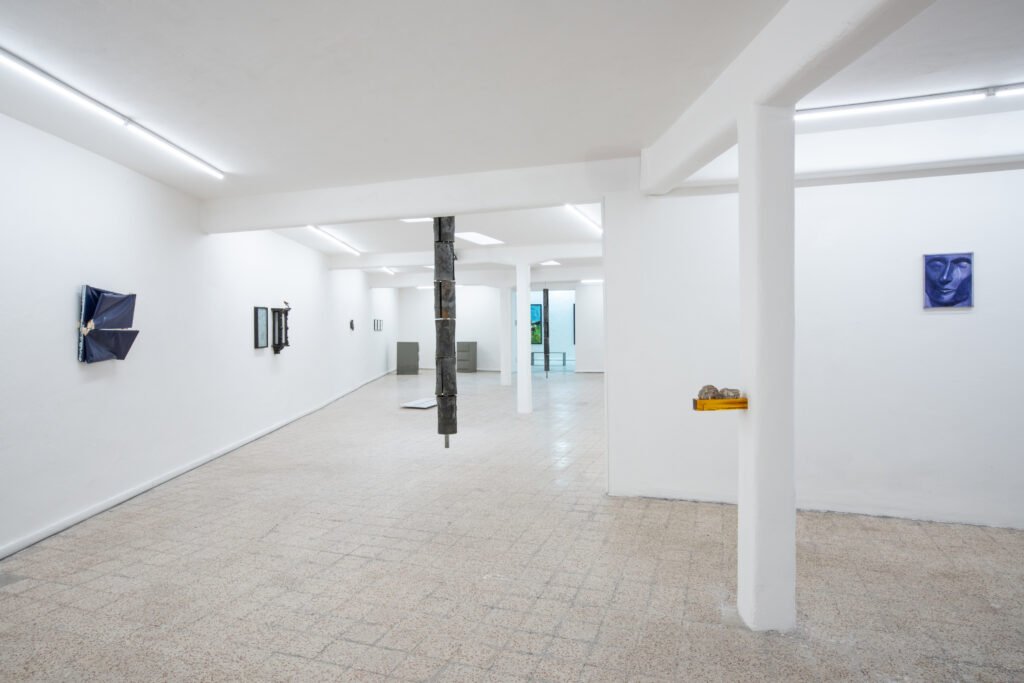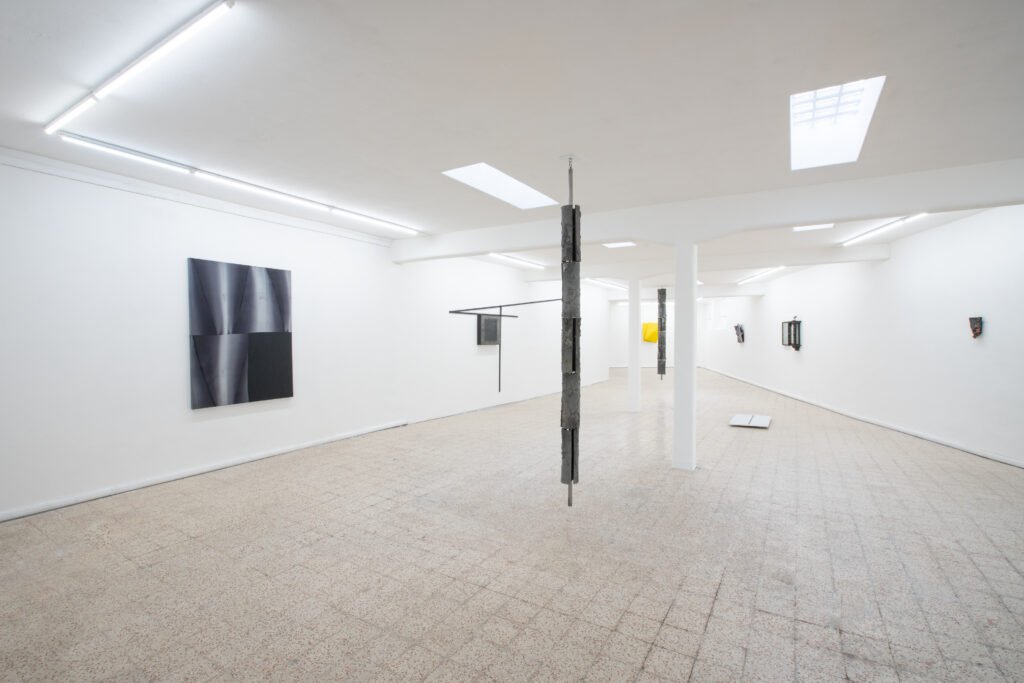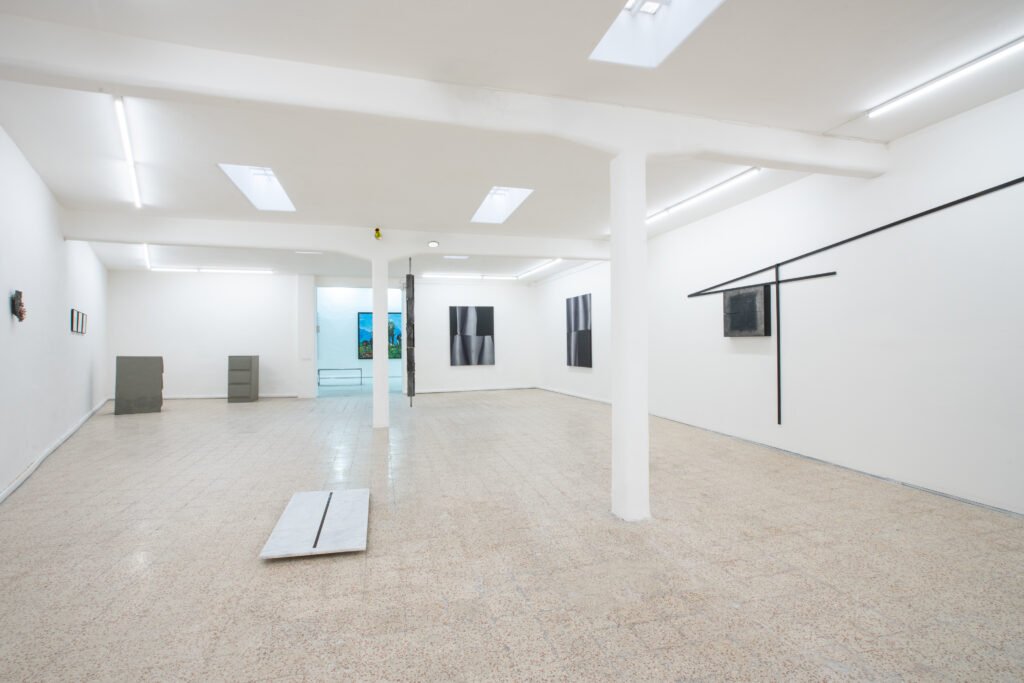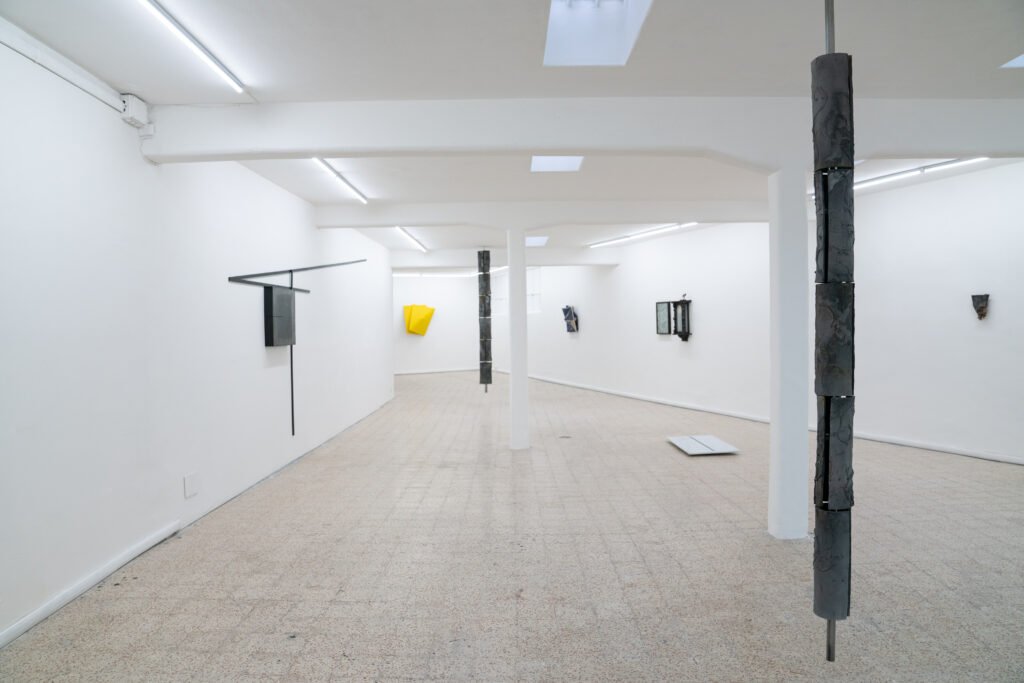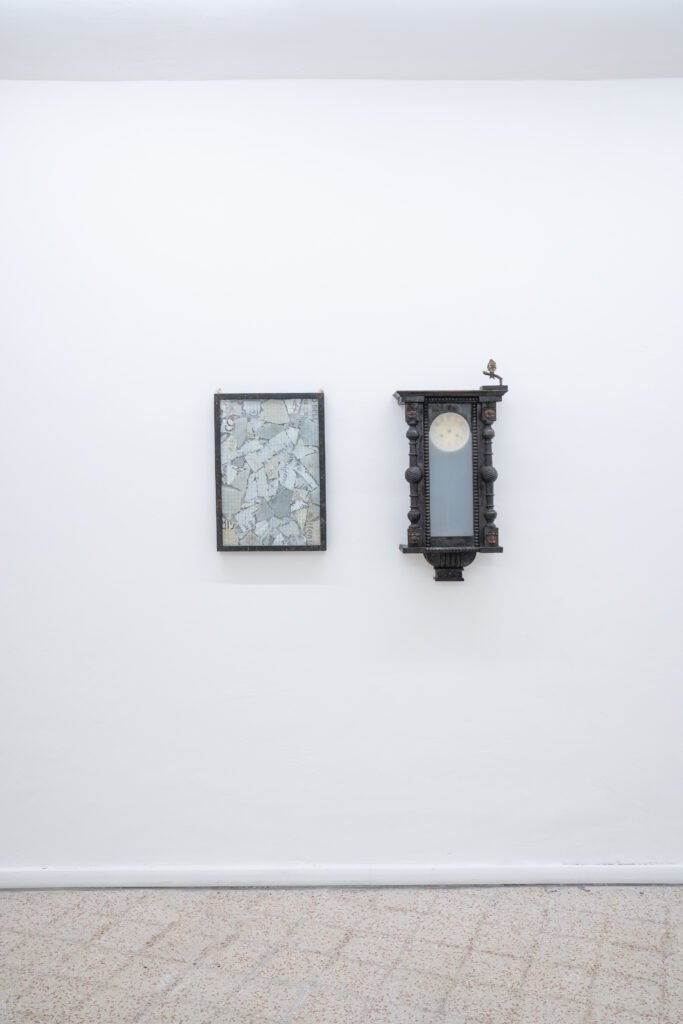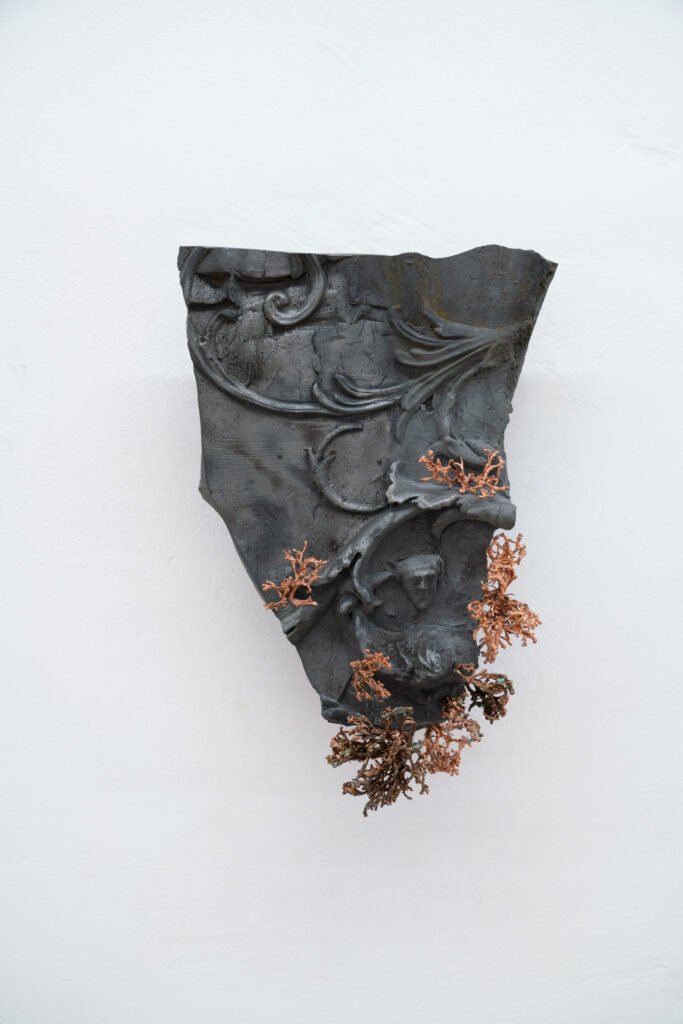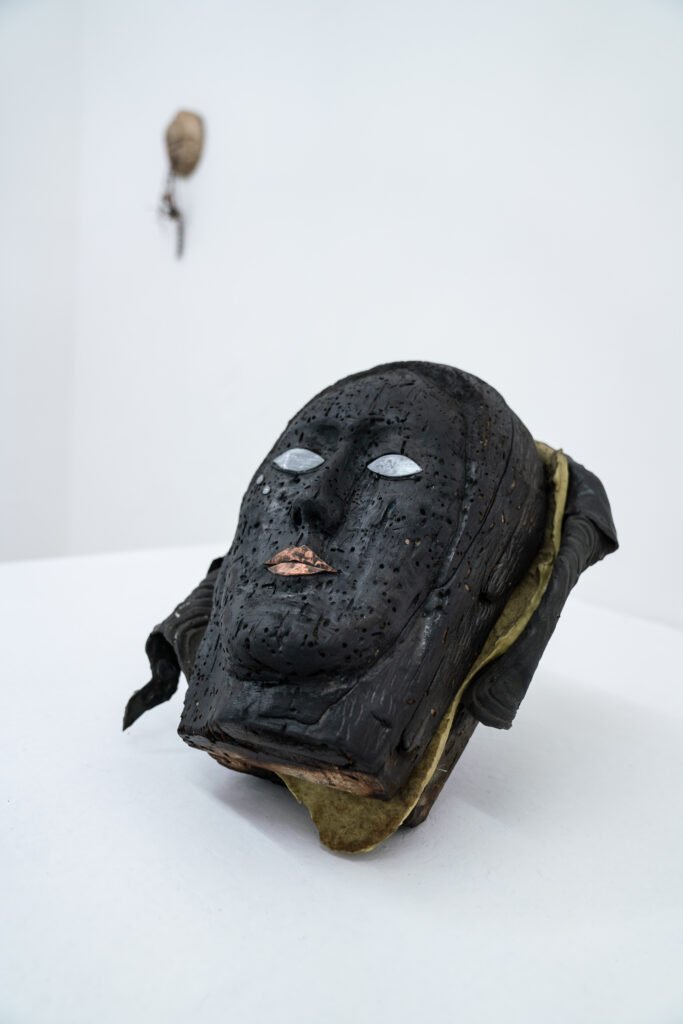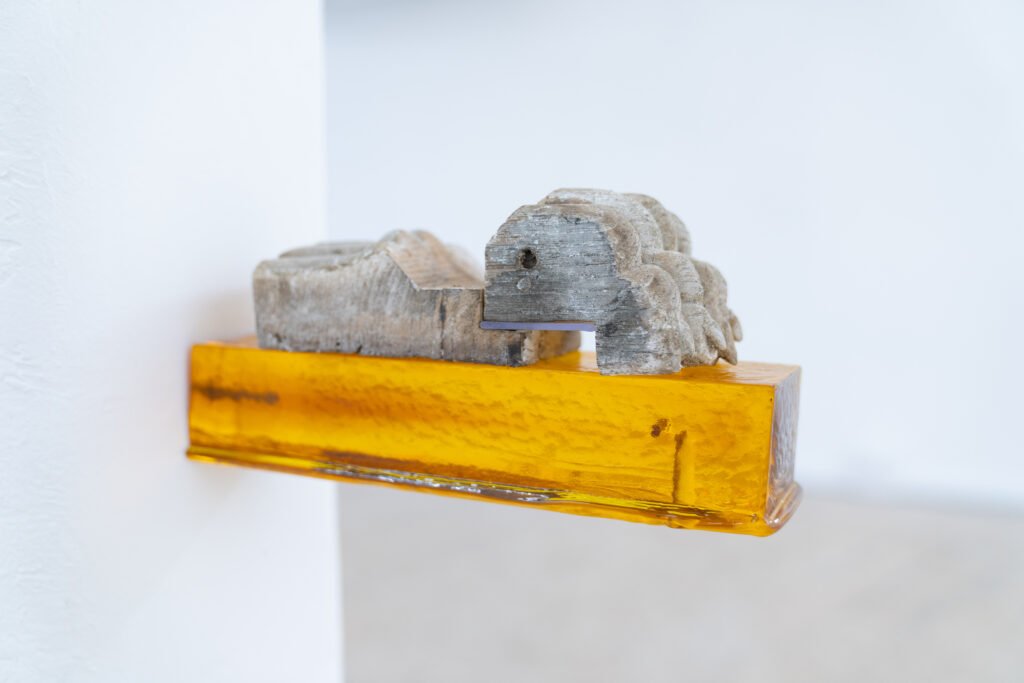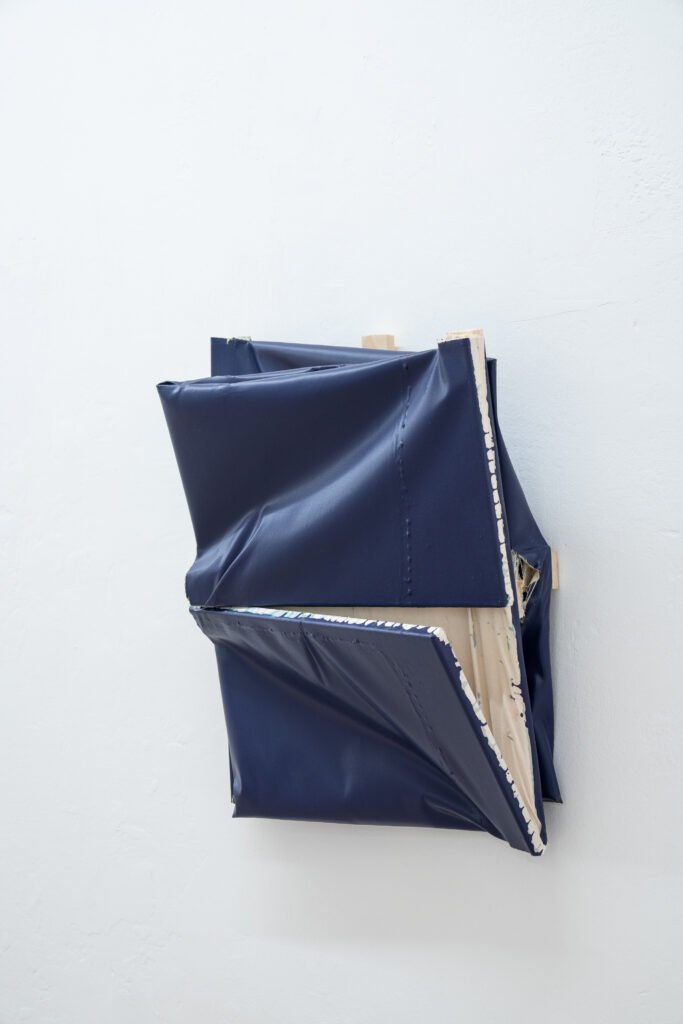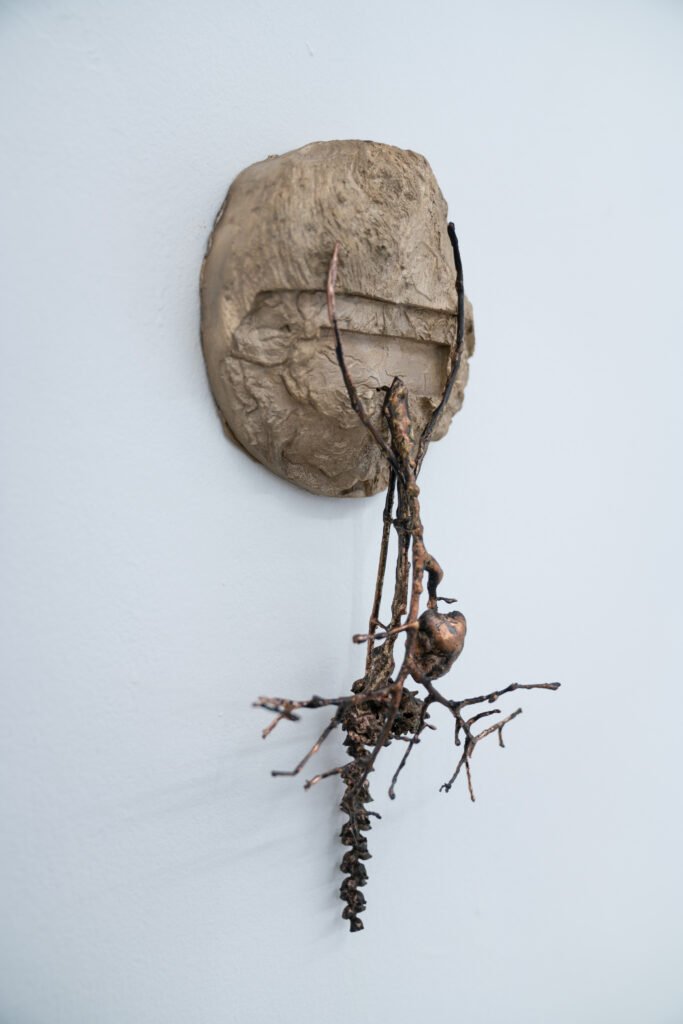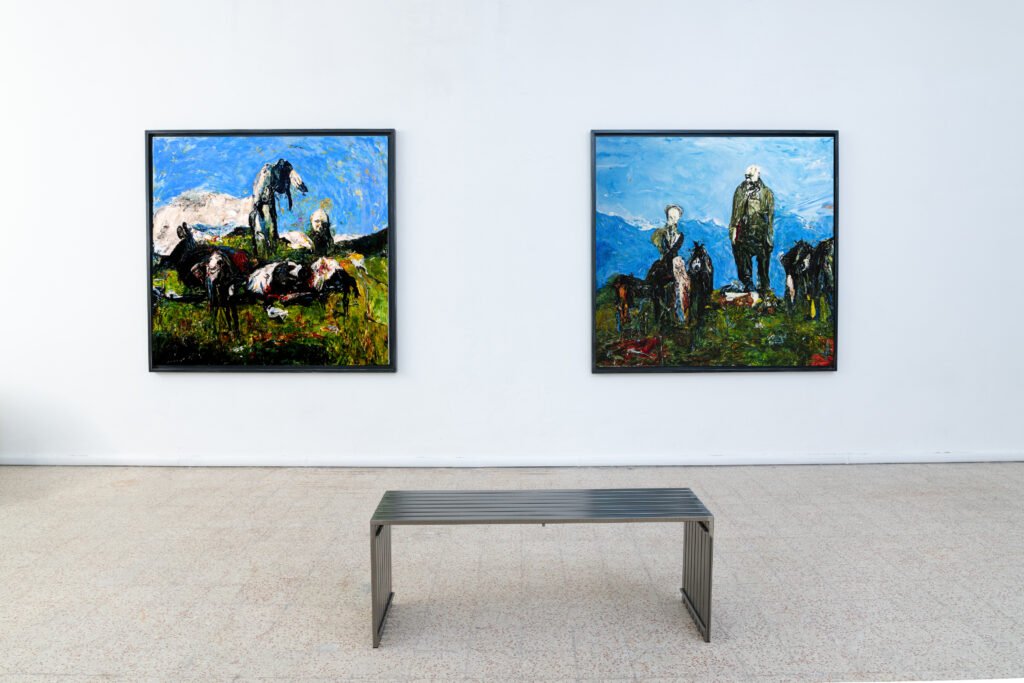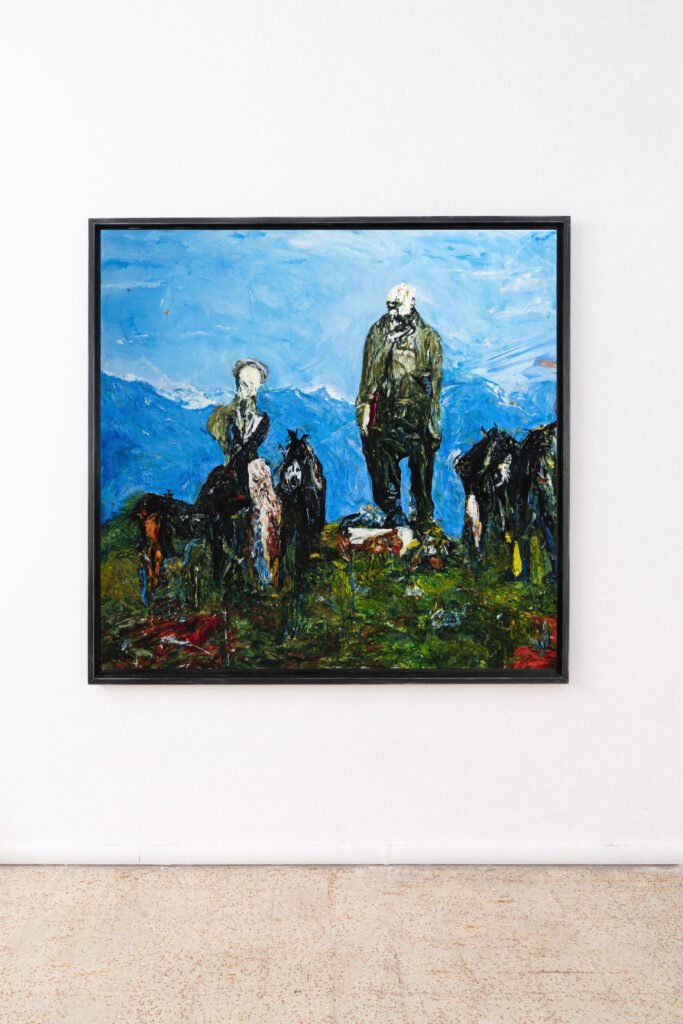Fatmah
Fatmah ( فاطمة ) emerges at the inauguration of the new spaces of the gallery as a melting pot of meanings, deeply rooted in the traditions of the Middle East, as a symbol rich in stories and interpretations, which reverberate through narratives and rituals. To align with Fatmah ( فاطمة ) means immersing yourself in a complex fabric of memory, where the sacred is intertwined with the daily. In Arabic “Fatah”, from which it derives, means “open” or “renew”, a reference that reflects not only the vitality inherent in the name, but also a promise of growth and prosperity, a wish for continuous regeneration, wisdom and resilience.
Auspiciousness is usually expressed in the temporal fragment between the end of something and the beginning of another. In the time-span that stands between the abandonment of a known world, whose signs and structures appear obsolete, and the first step towards hypothetical universes, in becoming. In this flash of reality is inherent a performative ritual, where the emotional atmosphere of a group is charged with thunder, lightning and variable winds. A kind of divination, which requires a previous reading of the context in order to be able to hope for a form of prediction of (hypothetical) events.
Consequently, Fatmah ( فاطمة ) can be conceived as a ritual of passage, it orients our gaze and is a factor of social action: it plays a crucial role, activating positive forces in a field of possibilities[1]. The symbolic structures that make up this framework vary between interests, intentions, aims, individual or collective aspirations, regardless of whether they are explicitly formulated or whether they must be recognized within practices or behaviors[2]. Finally, these symbols have the characteristic of continually acquiring or losing meanings, even if they only reappear in the temporal fragment of a work’s display.
In this perspective the exhibition project Fatmah ( فاطمة ) consists of a multiplicity of relationships, which are expressed in collective concatenations (in signs, language, gestures). If in the sculptures of Nicola Ghirardelli time is fragmented through the floral composition and its subsequent recomposition, in the works of Jacopo Naccarato it is the organicity of the human body to be the catalyst, while for Lorenzo Montinaro time alludes to a multiplicity of past, to a memory in constant disappearance. At the same time, memory is present in personal testimonies, becoming a factor of enormous importance in the pictorial works of Arvin Golrokh, as a reminder of practices of resistance from below towards institutionalized repressions. In this fragmentation, even the architectural and structural elements are in a state of suspension: it is the case of the installations of Giuseppe Lo Cascio, objects emptied of their original function, and endowed with new possibilities of accumulation; but also in the canvases of Franziska Reinbothe, decomposed and recomposed until a new structural degree is formulated; in the decomposition of constructivist utopias set in motion by the works of Sofiia Yesakova, as much as in the spatialization of the image through Linus Rauch’s painting.



